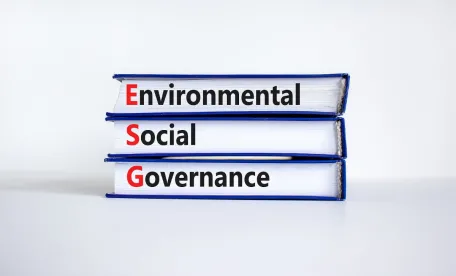Companies are putting forth more effort, thought, commitment, and resources into environmental, social, and corporate governance (ESG) considerations across their business lines. The focus of ESG has primarily centered around climate change and sustainability, but the “S” in ESG is becoming increasingly important to consumers and other stakeholders. As global corporate citizens become more vocal about asserting their identity and values, it is critical to think about how their global trade and compliance policies and supply chains reflect those values. Issues like forced labor in the supply chain, third party diligence, and how to build an ethical culture are part and parcel of a strong compliance program. But these issues also present opportunities for companies to reflect their values in a fundamental way and speak to what consumers are demanding with their dollars.
We specifically focus here on the issue of forced labor related to Uyghur Muslims in the Xinjiang region. Not only is there increased scrutiny on the issue of forced labor in supply chains because of media reporting and activist work, but there is also increased scrutiny by regulators on this issue – namely U.S. Customs & Border Protection (CBP). Consumers are increasingly using their purchasing power to reward companies that take meaningful steps to ensure their supply chains are free of forced and child labor, and punish companies that don’t.
Companies should take a close look at their trade and regulatory compliance infrastructure to make sure they are not only implementing best practices to reduce legal risk, but also to assert their commitment to ESG. Below we discuss some background and steps companies can take as best practices.
Background
The U.S. Government has significantly increased its scrutiny related to products made by forced labor, particularly from the Xinjiang region in China. Since 2019, CBP has issued a series of Withhold Release Orders (WROs) on imports—including on cotton and tomatoes products, and, most recently, solar panels (see our blog posts here and here)—where CBP believes such imports involve the use of forced labor. Additionally, the Commerce Department has added over 40 Chinese companies to the Bureau of Industry and Security (BIS) Entity List related to the human rights abuses in Xinjiang; and the Treasury Department through the Office of Foreign Assets Control (OFAC) has sanctioned different Xinjiang entities and political officials.
On July 13, 2021, several agencies, including the Departments of State, Commerce, Homeland Security, Labor, and Treasury, as well as of the United States Trade Representative, issued an updated “Xinjiang Supply Chain Business Advisory” (“Advisory”). The Advisory notes that “businesses and individuals that do not exit supply chains, ventures, and/or investments connected to Xinjiang could run a high risk of violating U.S. law.” The Advisory followed E.U. guidelines on forced labor, issued on July 12, 2021.
The heightened focus by agencies should be taken as a stark warning for companies with global supply chains – especially those using components and subcomponents (i.e., inputs, including raw materials) from Xinjiang. But more importantly, considering the issue of forced labor more broadly, companies committed to ESG and speaking to stakeholder values should evaluate their internal policies, procedures, and compliance frameworks to ensure that they are maintaining ethical sourcing practices. We believe that the best practices below can help companies protect themselves from enforcement and mitigate regulatory risk, but also be integrated as part of their ESG programs.
-
ESG Policies Prohibiting Forced Labor: Your company may have a corporate social responsibility (CSR) program, but CSR programs of the past have been replaced by more holistic and comprehensive ESG programs. Companies should ensure that their ESG policies and code of conduct are transparent, comprehensive, and clearly prohibit forced labor. The best ESG programs implement the International Labor Organization’s fundamental labor standards that include: (1) freedom of association, (2) collective bargaining, (3) employment discrimination, (4) child labor, (5) forced labor, (6) occupational safety and health, (7) wages, and (8) hours of work. Ensure your program includes a Supplier Code of Conduct that addresses ethical and sustainable sourcing.
-
Relationships with Suppliers: When vetting your suppliers, ensure that forced labor is part of your diligence. Make sure your contracts with suppliers and sub-suppliers include explicit terms and conditions that prohibit the use of forced labor, a time frame by which to take corrective action if forced labor is identified, and the consequences that may arise if corrective action is not taken. To the extent that your existing contracts do not include such language, consider adding when you renegotiate or ensure that your suppliers agree to abide by your policies and code of conduct.
-
Supply Chain Assessments: If you are in an industry that is facing scrutiny or if your supply chain is particularly susceptible to risks of forced labor, consider conducting a supply chain audit or assessment with support from a third party. Audits may consist of onsite visits; worker and management interviews; assessment of labor brokers and recruiters; and presentation of final report and results. A comprehensive third party audit and on-site visits with suppliers abroad may not always be feasible, but a lighter-touch assessment involving questionnaires, high-level interviews, and document review could also prove useful to provide information and a high-level understanding of gaps and areas for enhancement. Consider ranking suppliers based on these assessments, so that your business teams can be empowered to work with suppliers that score the highest.
-
Training (internal and external): Train relevant internal and external stakeholders on forced labor issues and use the opportunity to discuss your company’s values and commitment to ethical sourcing. Employees with compliance responsibilities and those that are charged with sourcing products from international vendors and suppliers should be trained on how to issue-spot and identify red flags. Maintain records of such trainings, and update them as regulations and risks evolve. Additionally, the company should consider training other stakeholders involved in the supply chain such as vendors or agents; suppliers at various tiers of the supply chain; and labor brokers, recruiters, and employment agencies.
-
Mapping Your Supply Chain: Consider a supply chain mapping exercise to identify your suppliers and sub-suppliers, and, if possible, assess your supply chain to the raw materials level. This exercise, while certainly a challenge for companies with complex supply chains, will help you evaluate risks and focus your compliance efforts where it’s most needed. Based on our experience, it appears to be CBP’s expectation that importers are able to trace to the raw materials level. In the event you are facing regulatory inquiries, the exercise might be invaluable.
-
Access to Records: Oftentimes when facing an inquiry from the government, you must prove a negative – to demonstrate your imports are not produced with forced labor. In addition to making sure all your compliance steps, as described above, are well documented and organized, ensure that you are able to access records from your suppliers if needed. You are likely to be asked for labor / employment and global trade information from your suppliers and potentially their suppliers (including how workers are hired, whether recruiters or brokers are involved, and about employment contracts). Ensure that your agreements include language about having access to certain records and that there is an understanding between the parties about providing information when requested.
-
Continuous Monitoring and Improvement: The most effective and successful compliance programs are ones that continually evolve to address new risks and speak to stakeholder concerns. This requires self-assessment, monitoring, and implementing enhancements as needed. Sometimes, that might mean diverting resources from lower risk areas to higher risk areas. And when it comes to ESG considerations, we will continue to see heightened awareness in certain areas that require more attention and efforts from companies.
At the end of the day, we believe that centering your supply chain and broader compliance efforts around your values and your ESG commitments will empower your employees, reduce your risk, and reap both business and societal rewards.




 />i
/>i
